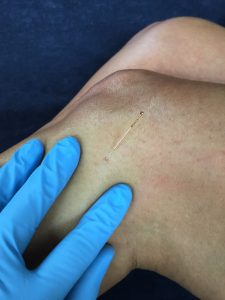Recently I have been treating a lot of sprained ankles because one role a physiotherapist has is the treatment of soft tissue injuries. This will vary depending on the nature and severity of the injury. It is advised to always seek prompt medical attention following an injury as this will ensure an accurate diagnosis and the correct specific care. However there is some generic research based advice that can be followed immediately after an acute soft tissue injury.
The acronym PRICE Protection, Rest, Ice, Compression and Elevation remains one of the most popular approaches to management for the first 24-72 hours following injury.
Protection: a short period of protecting the injured area through unloading/not using the injured area is required after the majority of soft tissue injuries. However excessive protection (and rest) and unloading of the joint can do harm. This is one reason why it is important to seek advice about how to progress the loading of the joint during the first few days post injury.
For example an ankle sprain: using elbow crutches to walk with for the first 24-72 hours will help unload the ankle joint and so protect it but it is important to wean off the crutches and start loading the joint at the correct time.
Rest: if the injury has occurred during an activity then cease the activity immediately. Resting the injured area helps prevent further damage and avoids further pain. However, as discussed previously excessive rest for excess of 72 hours can do harm.
Ice: standard application of ice is for 20 minutes over the injured site every 2 hours for at least the first 6 hours following the injury (the skin must be intact). The ice can help with reducing the pain and there is some evidence that ice can help with inflammation.
Compression: applying a firm (but not so tight it causes discomfort) bandage to the injured area can provide support (which can help with confidence as the injured area can feel more supported). It can also help reduce local bleeding and swelling.
Elevation: placing the body part higher than the heart (if possible) can help reduce the accumulation of excess fluid (swelling) in the area. Elevation can be achieved by wearing a sling for the arm or placing the leg on a stool or in lying with it rested on pillows.
In addition to the above advice, it is important to avoid the following HARMful activities for the first 72 hours following the soft tissue injury:
Heat: avoid hot baths, heat packs, saunas and heat rubs because heat can increase bleeding and swelling at the injured area.
Alcohol: it may mask pain and the severity of the injury increasing the risk of re injury. It can increase swelling, bleeding and delay healing.
Running/moderate activity: it can cause further damage to the injured area.
Massage: Vigorous massage to the actual injured area for the first 24-72 hours post injury could cause further bleeding, swelling and pain. Massage in areas away from the injury maybe beneficial but that should be determined by a qualified professional.
The advice given above is for the first 24-72 hours following an acute soft tissue injury. Post 72 hours, rehabilitation to reduce pain, increase movement and strength of the area and increase balance (for a leg injury) is required. The treatment plan will depend on the location, severity and nature of the injury. If you ever have any questions or are unsure how to proceed following the injury, always seek medical advice.



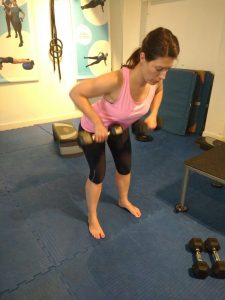 One of the biggest consequences of life today is that we don’t need to move. Work for a huge amount of us involves sitting at a desk all day long in front of a computer or looking down at our smart phones. I include myself in this. Although my job involves a hands-on aspect treating people I still find myself spending more and more time in front of a computer because of the demands of running a business as a physiotherapist. We cannot always change the fact we have to work like this but we can alter how we counteract the prolonged periods of being sedentary.
One of the biggest consequences of life today is that we don’t need to move. Work for a huge amount of us involves sitting at a desk all day long in front of a computer or looking down at our smart phones. I include myself in this. Although my job involves a hands-on aspect treating people I still find myself spending more and more time in front of a computer because of the demands of running a business as a physiotherapist. We cannot always change the fact we have to work like this but we can alter how we counteract the prolonged periods of being sedentary. 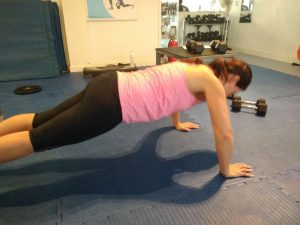
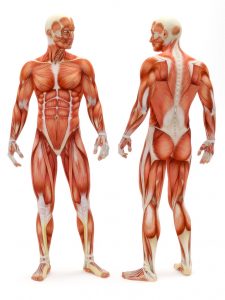 I spend a lot of time treating muscles because they can be the source of a lot of patient’s problems. This is because they have such a key role within the body and we ask so much of them. There are 3 types of muscle: skeletal (they move parts of the body including arms and legs), smooth (found in the internal organs) and cardiac (heart). Today I thought I would discuss skeletal muscle.
I spend a lot of time treating muscles because they can be the source of a lot of patient’s problems. This is because they have such a key role within the body and we ask so much of them. There are 3 types of muscle: skeletal (they move parts of the body including arms and legs), smooth (found in the internal organs) and cardiac (heart). Today I thought I would discuss skeletal muscle.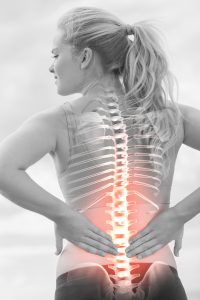 Lower back pain is one of the most common problems I see in my practice. The severity, duration and intensity is variable but the predominant reason for patients attending physiotherapy is the same. They are in pain and the pain is affecting their daily lives and ability to carry out activities.
Lower back pain is one of the most common problems I see in my practice. The severity, duration and intensity is variable but the predominant reason for patients attending physiotherapy is the same. They are in pain and the pain is affecting their daily lives and ability to carry out activities.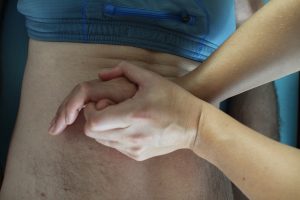 Often, when it is someone’s first time attending a physiotherapy assessment they do not know what to expect. I thought I would write a brief blog outlining the fundamentals of a physiotherapy assessment in the practice setting and how the assessment determines what treatment comes next.
Often, when it is someone’s first time attending a physiotherapy assessment they do not know what to expect. I thought I would write a brief blog outlining the fundamentals of a physiotherapy assessment in the practice setting and how the assessment determines what treatment comes next.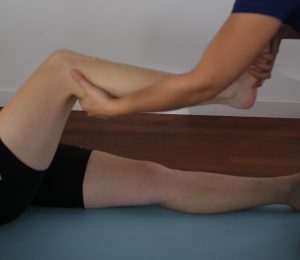 There is quite a varied opinion on what physiotherapy is and what physiotherapists do. This is not surprising as people’s opinions will depend on their own experiences with physiotherapy which can be very different depending on why they required the physiotherapy in the first place. Physiotherapists can be found throughout all aspects of healthcare. From Intensive care rehabilitation, stroke units, children’s wards to a general practice on the high street.
There is quite a varied opinion on what physiotherapy is and what physiotherapists do. This is not surprising as people’s opinions will depend on their own experiences with physiotherapy which can be very different depending on why they required the physiotherapy in the first place. Physiotherapists can be found throughout all aspects of healthcare. From Intensive care rehabilitation, stroke units, children’s wards to a general practice on the high street.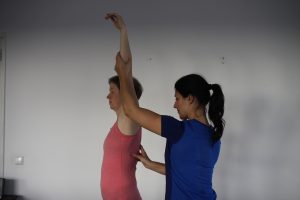
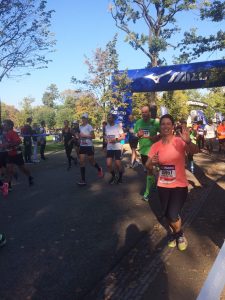 On October 16th 2016 I ran my first half marathon here in Amsterdam. Prior to this I had run a couple of 10km and 5km races years ago. My reasoning behind running the half marathon was that this year I wanted a new physical challenge. I chose running as it was one of the most accessible and convenient forms of exercise I could do, fitting runs in between work. Also I’ve always wondered whether I could actually run a half marathon.
On October 16th 2016 I ran my first half marathon here in Amsterdam. Prior to this I had run a couple of 10km and 5km races years ago. My reasoning behind running the half marathon was that this year I wanted a new physical challenge. I chose running as it was one of the most accessible and convenient forms of exercise I could do, fitting runs in between work. Also I’ve always wondered whether I could actually run a half marathon.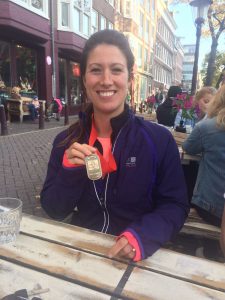
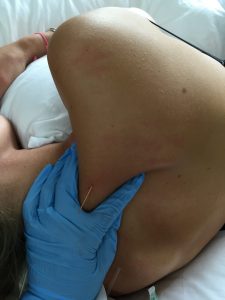 Whenever I mention that I do superficial and deep tissue dry needling as a treatment technique, the very first thing people ask me is “Is that acupuncture?” The simple answer is “No it is not”. Acupuncture uses a different mind-set and a different language. I am not an expert on acupuncture and do not want to do the individuals who practice acupuncture the disrespect of even attempting to explain its concepts and complexities. However I will discuss it in reference to comparing it with the dry needling techniques I use.
Whenever I mention that I do superficial and deep tissue dry needling as a treatment technique, the very first thing people ask me is “Is that acupuncture?” The simple answer is “No it is not”. Acupuncture uses a different mind-set and a different language. I am not an expert on acupuncture and do not want to do the individuals who practice acupuncture the disrespect of even attempting to explain its concepts and complexities. However I will discuss it in reference to comparing it with the dry needling techniques I use.